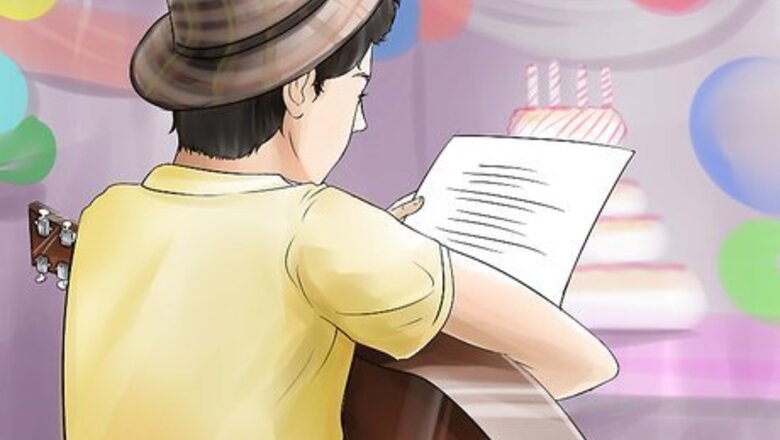
views
Playing the Chords
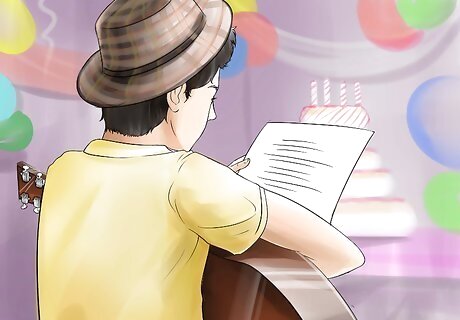
Study the chord progression before you start playing. If you already know how to read chord progressions, simply read this step and skip the rest of this section as the chords to "Happy Birthday" are very simple. Below is the chord progression to "Happy Birthday". Happy BirthdayHap-py |(C) birth - day to |(G) you. Hap-py | birth - day to |(C) you. Hap-py | birth-day dear |(F) (na-ame). Hap-py |(C) birth - day (G) to |(C) you. A few important things to note about "Happy Birthday": The song uses a 3/4 (waltz) beat. This means that there are three beats per measure and that the quarter note gets one count. This is easy to observe in the first measure: if you follow the lyrics, "birth - day - to", each syllable gets one beat. The song starts with two pickup eighth notes. In other words, the "Hap-py" at the start of the song occurs before the first beat as the chords don't kick in until "Birth-day". You can use any strumming pattern that's comfortable for you. A simple one that works well is to simply use a down strum for each quarter note (three per measure).
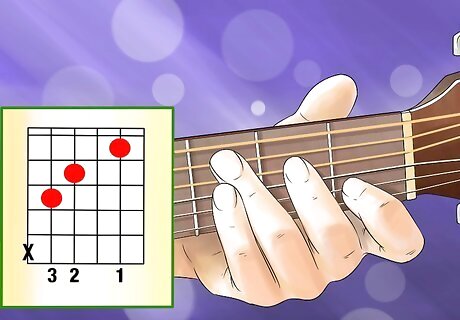
Play one measure of C. "Happy Birthday" starts on a C major open chord. This chord is played for the whole first measure, starting on the "birth" syllable of "birthday". You don't have to play any chords on "Happy", since these are pickup notes to the first measure. An open C major chord is played like this: Open CHigh E string: Open (0)B string: First fret (1) G string: Open (0)D string: Second fret (2)A string: Third fret (3)Low E string: Not played (X) You can keep from playing the low E string by muting it with one of your fretting fingers or simply avoiding hitting it with your strumming hand.
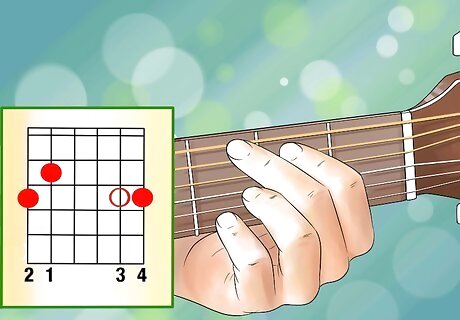
Play two measures of G. On the first beat of the second measure (starting on the "you" syllable), play an open G major chord. Keep playing this chord through the third measure. An open G major chord is played like this: Open GHigh E string: Third fret (3)B string: Open (0) G string: Open (0)D string: Open (0)A string: Second fret (2)Low E string: Third fret (3)
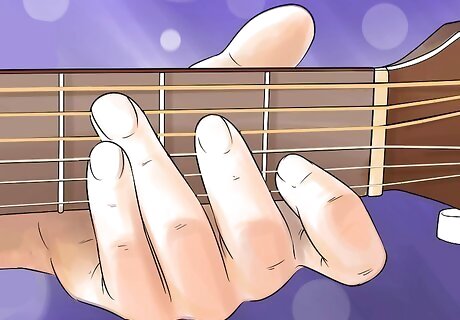
Play two measures of C. Next, on the syllable "you", play an open C chord. Keep playing this chord through the fourth and fifth measures and the syllables "Hap - py birth - day dear..."
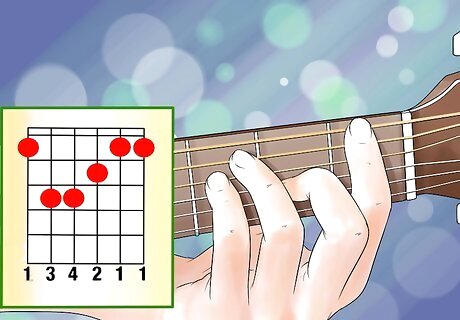
Play one measure of F. On the first beat of the sixth measure, play an F major chord. This will be the first syllable of the name of the person whose birthday it is. Play this F chord for the whole measure, through the next "Hap - py" syllables. An F major chord is played like this: F MajorHigh E string: First fret (1)B string: First fret (1) G string: Second fret (2)D string: Third fret (3)A string: Third fret (3)Low E string: First fret (1) Note that the chord above is a barre chord. This means that it uses the side of your index finger to fret all of the strings on the first fret. Beginners can find this difficult to do, so, if you can't quite get it to sound right, try this alternative instead: "Easy" F MajorHigh E string: First fret (1)B string: First fret (1) G string: Second fret (2)D string: Third fret (3)A string: Not played (X)Low E string: Not played (X)

Play two beats of C and one beat of G. The seventh measure is the only one in the song that isn't the same chord for the whole measure. Play C on the "birth - day" syllables and G on the "to" syllable. In other words, two beats of C and one beat of G. You may have trouble switching between these two chords so quickly if you're a beginner. Practice this measure by itself and don't give up as you want your finger motions to eventually become second-nature.
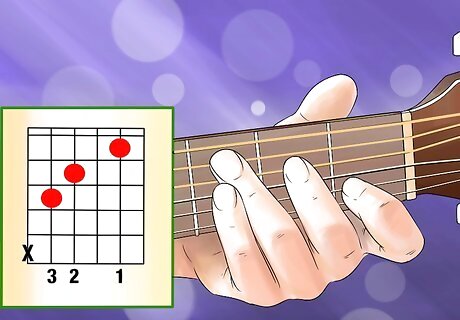
End on C. End the song by playing an open C major chord on the final "you." For effect, let this final chord ring out. Congratulations! You've just played "Happy Birthday." Practice the steps above until you've gotten the hang of it, then try singing over the chords!
Playing the Melody
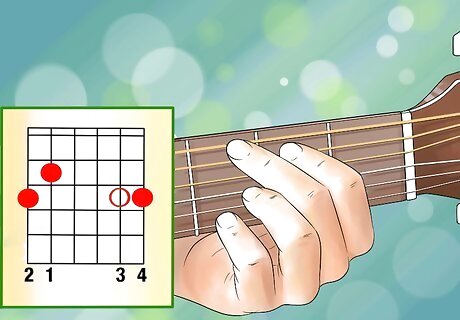
Start with two G pickup notes. The melody to "Happy Birthday" is a simple one that everyone knows, so practicing it is easy and you'll know right away if it sounds wrong. The first two notes (the ones that correspond to "Hap - py") are both Gs. The note you'll want to start with here is the one you get by playing the open G string. Play one note for each syllable in "Hap - py," like this:High E string:----------------B string: --------- G string: 0-0--------- D string:--------A string:--------Low E string:-------- For this section, since there's not an easy way to represent staff music or tablature on WikiHow, we're going to proceed measure-by-measure. For a traditional inscription of the melody, visit a site like start-playing-guitar.com.
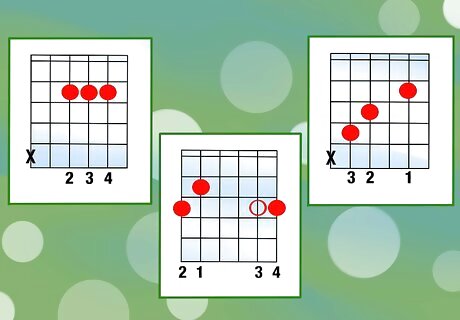
Play A-G-C in the first measure. Each beat gets one note, like this:High E string:--------B string: ----------1 G string: 2--0 D string:--------A string:--------Low E string:--------
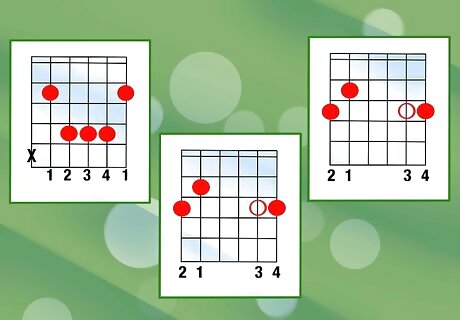
Play B-G-G in the second measure. B gets two beats and the two G eighth notes get one, like this:High E string:--------B string: 0------ G string: --------0-0 D string:--------A string:--------Low E string:--------
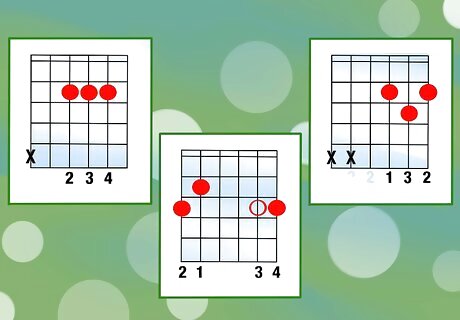
Play A-G-D in the third measure. The third measure is the same as the first, except that the final note is two frets up, like this:High E string:--------B string: ----------3 G string: 2--0 D string:--------A string:--------Low E string:--------
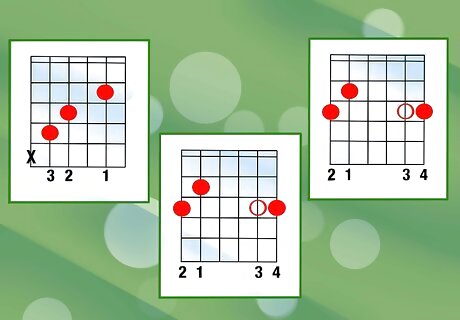
Play C-G-G in the fourth measure. The fourth measure is the same as the second, except that the first note is one fret up, like this:High E string:--------B string: 1------ G string: --------0-0 D string:--------A string:--------Low E string:--------
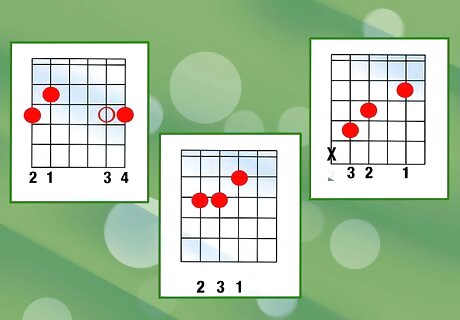
Play G-E-C in the fifth measure. The G you start on here is an octave higher than the G you've used earlier. The next two notes descend from this G, like this:High E string:3--0--B string: --------------1- G string: --------- D string:--------A string:--------Low E string:--------
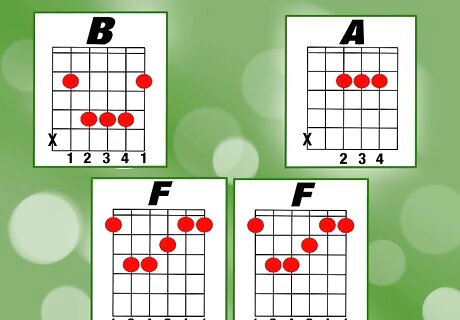
Play B-A-F-F in the sixth measure. The B you start on here is made with the open B string and the final Fs are played as eighth notes on the high E string, like this:High E string:---------1-1-B string: 0-------- G string: ----2------ D string:--------A string:--------Low E string:--------
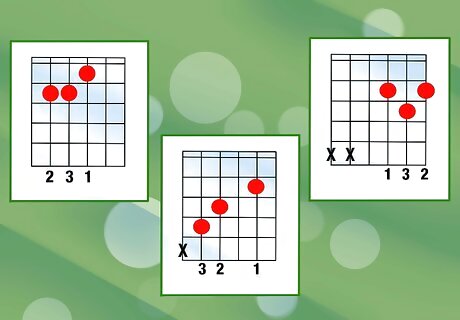
Play E-C-D in the seventh measure. Start on the open high E string here, like this:High E string:0------------------B string: -----1--3------ G string: ---------- D string:--------A string:--------Low E string:--------
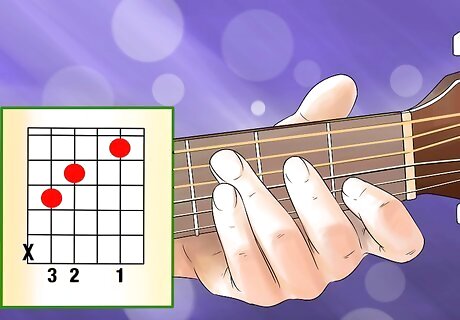
End on C. Finally, hit the first fret on the B string to bring the song to a close, like this:High E string:----------------B string: 1-------- G string: ---------- D string:--------A string:--------Low E string:--------
Making the Song Sound Great
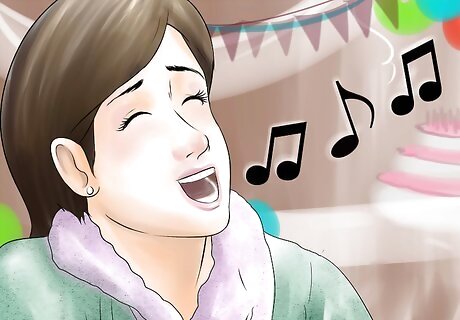
Swing the "Hap - py" eighth notes. Above, we've used straight eighth notes for each of the "Hap - py"s in the song — that is, eighth notes where each note is played for the same amount of time. However, if you pay attention while you sing the song, you'll probably notice that the eighth notes aren't actually played straight. Rather, they're swung, which means that the first eighth note is a little longer than the second. To play the song more accurately, the "hap" syllable should be played for a little more time and the "py" syllable should be played for a little less time than if you were using straight eighths. In musical terms, we'd say that the first eighth note in each "Hap - py" is a dotted eighth note and the second is a sixteenth note.
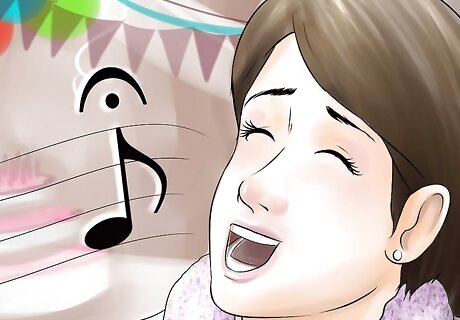
Let each "you" note ring a little longer than normal. Try singing the song aloud to yourself again. Odds are, you'll naturally stretch out each "you" and the last syllable of the birthday boy/girl's name. This is a good thing, as it lends the song a little more of an emotional, dramatic quality. If you're not already doing this when you play the song on guitar, try adding it to your playing and it should come easily. In musical terminology, holding a note at the end of a piece or phrase in this way is called a fermata.
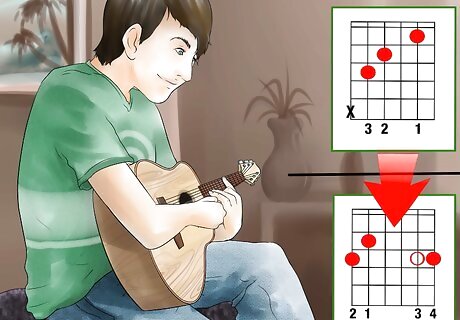
Try playing in different keys. The notes and chords above don't make up the only way to play "Happy Birthday". In fact, there are several different sets of chords and notes (called "keys") that you can use to play this song. Though a discussion of what exactly a key is is beyond the scope of this article, it's easy to find music for "Happy Birthday" in different keys by using a search engine query like "Happy Birthday guitar keys." For example, here's another way to play "Happy Birthday:" Happy BirthdayHap-py |(G) birth - day to |(D) you. Hap-py | birth - day to |(G) you. Hap-py | birth-day dear |(C) (na-ame). Hap-py |(G) birth - day (D) to |(G) you.
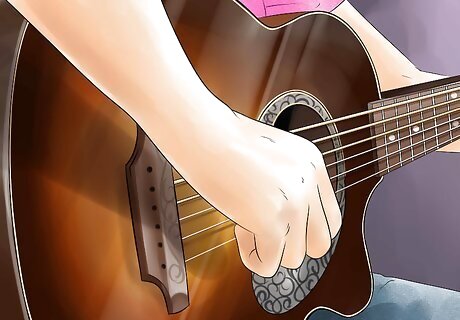
Try substituting 7 chords in the third and seventh measures. In the examples above, we've only used major (happy-sounding) chords. In reality, you can also add chords called 7 chords to this song to give it a slightly more complex, almost bluesy feel. If you want to do this, simply change the chord in the third measure and the second chord in the seventh measure to the 7 version of that chord so that a D becomes a D7, a G becomes a G7, and so on. For example, here is the original chord progression for "Happy Birthday" from the top of this article with 7 chords substituted in: Happy BirthdayHap-py |(C) birth - day to |(G) you. Hap-py |(G7) birth - day to |(C) you. Hap-py | birth-day dear |(F) (na-ame). Hap-py |(C) birth - day (G7) to |(C) you. For reference, a G7 chord is played like this: Open G7High E string: First fret (1)B string: Open (0) G string: Open (0)D string: Open (0)A string: Second fret (2)Low E string: Third fret (3)




















Comments
0 comment